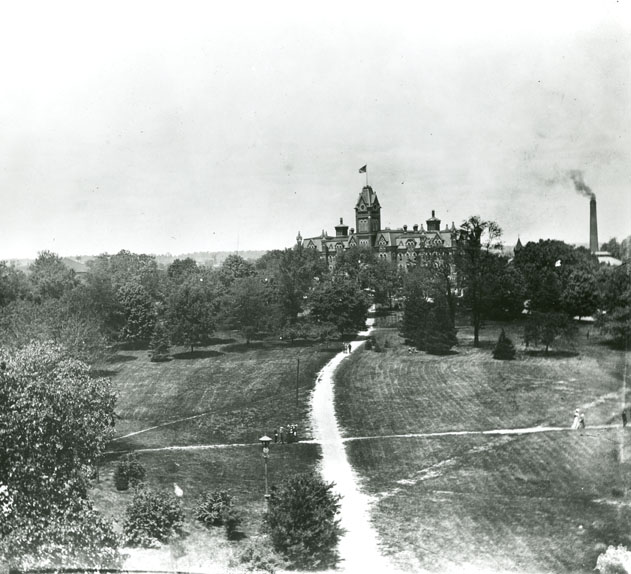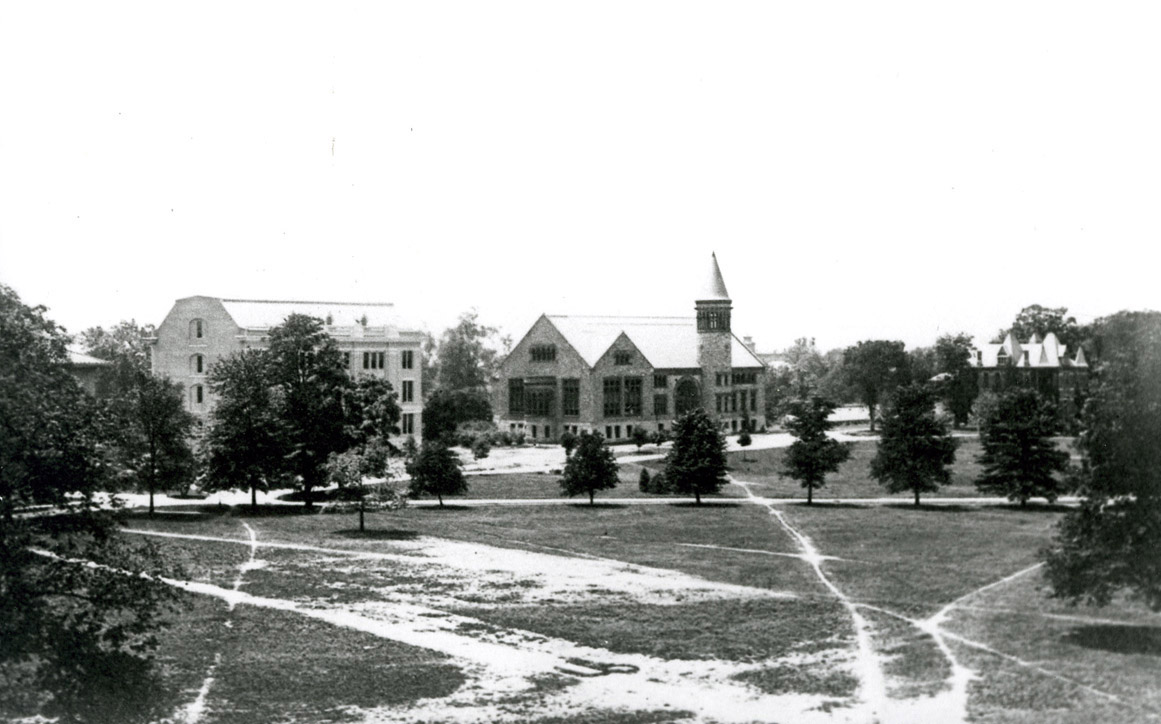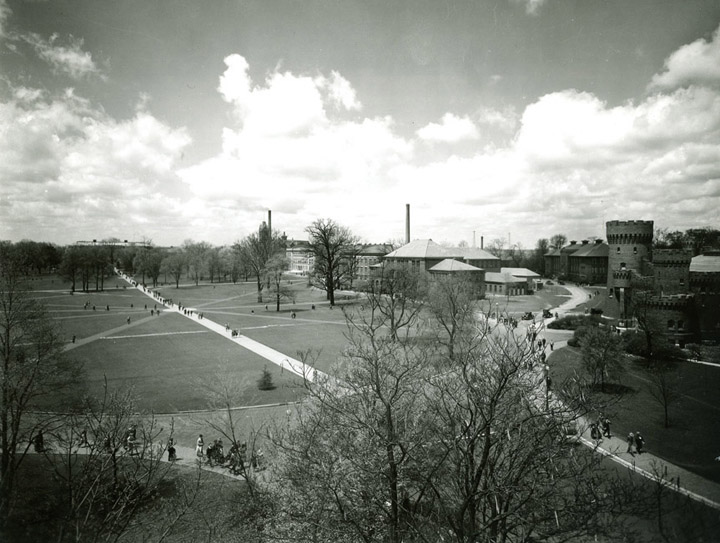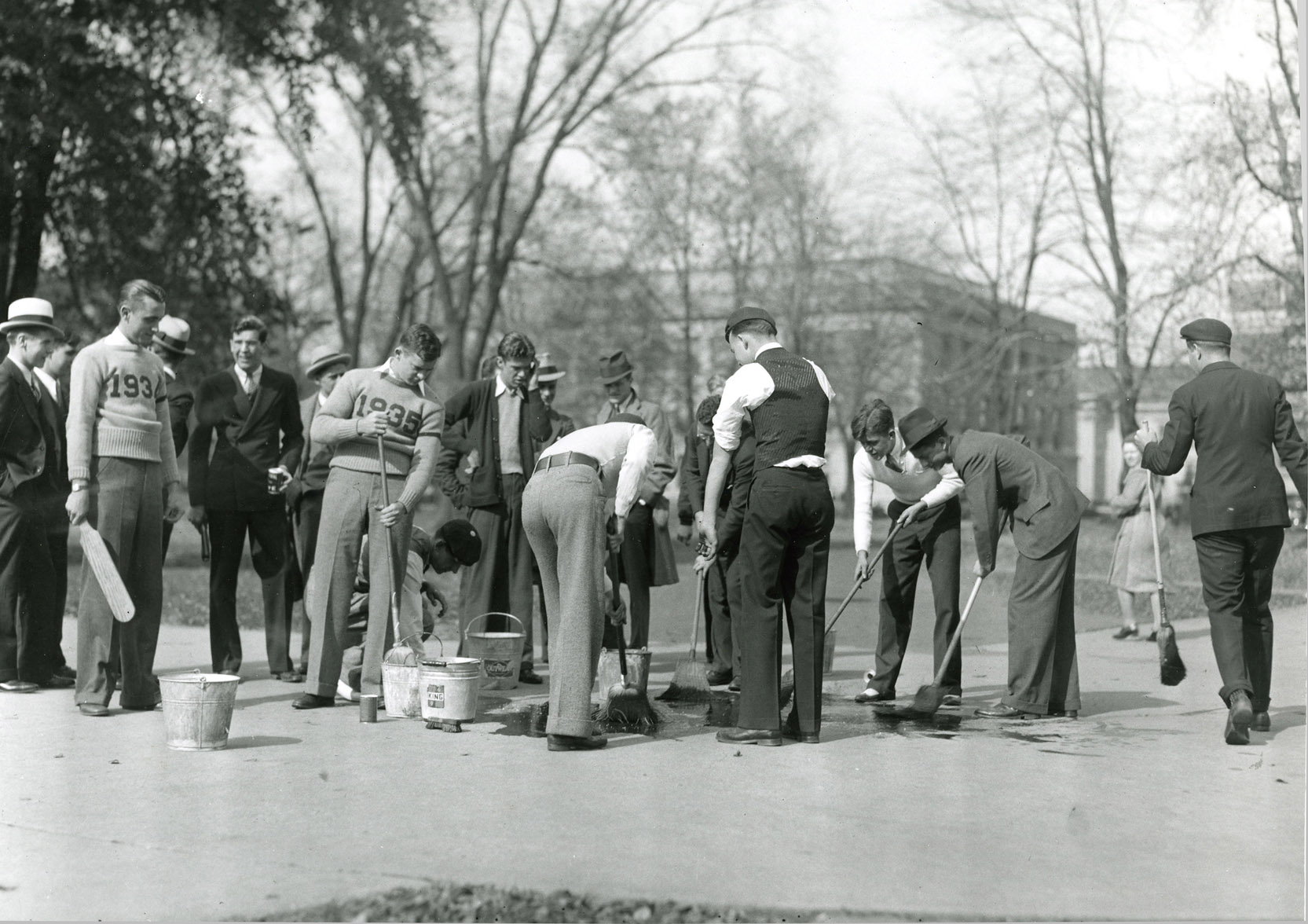It’s hard to imagine OSU without an Oval or a Long Walk, but it turns out that both of these were purely accidental when it came to the early shaping of the University’s design.
The layout of early campus actually followed that of an English Manor, with the manor house, (the original University Hall), on high ground and set back from the road. Access to High Street was by a path that ran diagonally across what is now the Oval to the site of Page Hall.
Early campus planning of the University did not include an Oval in the middle of campus, and certainly no “Long Walk.” But, in the early 1890s, as some of the first campus buildings were built in certain spots, it created a central green area. In 1893, a new master plan was proposed that created a layout for a “central open space around which buildings could be arranged, and which would not be crossed by any roads.” By 1901, this space had closely evolved into the shape of today’s Oval.
As buildings continued to go up, students began creating their own walking paths, trekking across the grass to their destinations. Their walking paths partly led to the current design of sidewalks, including the Long Walk.
Joseph N. Bradford, who became University Architect in 1911, was the next piece of the puzzle in the Long Walk’s creation. Bradford was committed to a formal arrangement of campus. In fact, the campus plan he created in early 1914 showed a very formal, geometric pattern of walks within the Oval. By the fall of 1914, the Long Walk was constructed.
However, the construction of the Long Walk did not seem to elicit the fanfare one might expect today from the media. A Lantern article dated September 15, 1914, includes a paragraph about the new walk in a story about two new buildings on campus:
“A broad walkway, of dark red cement has been built from the main entrance to the Library across the oval to the Fifteenth avenue entrance. Walks to the Chemistry building and to Orton Hall extend from it…..”
Not everyone on campus benefited from the Long Walk. In the 1920s and 1930s, freshmen were forbidden to use the Long Walk. The penalty for being caught on the path – which was enforced by the upper-classmen honorary Bucket and Dipper – was to be thrown in Mirror Lake.
In 1931, freshmen of the class of 1935 were in hot water after Bucket and Dipper members found the class emblem of 1935 painted all over the Long Walk. All of the freshmen suspected in the painting were told to report to the Oval every day at 12:30 p.m. for an hour’s worth of cleanup, until all of the painted numerals were gone.
One suspected freshman, who had been assigned the task of bringing buckets of water from Mirror Lake to the Long Walk for the cleanup, said “I’d rather carry the water from the lake than be tossed into it.”
Students, on their way to classes during the Long Walk cleanup, apparently gathered around to watch the freshmen at work. It was reported that up to 60 spectators were observing the action, while other freshman on the way to classes steered clear and avoided the scene altogether.
The Oval and the Long Walk have been home to many other student activities over the years. Check out our Oval gallery on Flickr to see how the campus spot has changed over the years.








Recent Comments